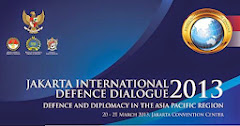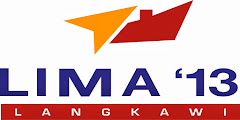 KRI Sutanto (877) satu dari 16 korvet kelas parchim (photo : Kaskus Militer)
KRI Sutanto (877) satu dari 16 korvet kelas parchim (photo : Kaskus Militer)Sejumlah kapal perang RI (KRI) kelas Parchim eks Jerman, dengan penampilan baru setelah mengalami "repowering", melakukan demonstrasi berbagai manuver dan membentuk sejumlah formasi di perairan Teluk Jakarta, Selasa.
Kapal-kapal itu antara lain KRI Imam Bonjol, KRI Teuku Umar, KRI Silas Papare, KRI Sultan Thaha Syaifuddin, KRI Tjiptadi, dan KRI Untung Surapati.
Menurut Kasal Laksamana TNI Bernard Kent Sondakh, keenam kapal perang tersebut merupakan sebagian dari 12 kapal sejenis yang mengalami repowering.
"Kita memiliki 16 kapal eks Jerman kelas Parchim, yang sekarang sudah direpowering sejumlah 12 kapal, dan sisanya empat kapal lagi masih dalam proses penyelesaian dan diharapkan bulan Juli atau Agustus 2003 sudah selesai direpowering, sehingga tahun depan seluruh kapal itu sudah siap operasi," kata Kasal.
Kapal-kapal itu disiapkan dengan biaya hanya sekitar 3 juta dolar AS per kapal, jauh lebih murah dibandingkan dengan pengadaan kapal baru sejenis yang dapat mencapai harga antara 140 - 150 juta dolar AS.
Saat ini, TNI AL mempunyai 116 kapal, dan tahun depan akan didispose delapan kapal, sehingga tinggal 108 kapal saja yang beroperasi.
Kendati kapal-kapal yang ada itu rata-rata telah berusia 30 tahunan, namun masih bisa dipertahankan beroperasi melalui program Perpanjangan Usia Pakai (PUP) dengan mengganti mesin dan perbaikan badan kapal.
Dengan mengeluarkan biaya hanya 48 juta dolar AS, Kasal melanjutkan, TNI AL dapat menyiapkan 16 kapal yang dapat bertahan 15 hingga 20 tahun lagi.
"Sementara dengan biaya sebesar itu, satupun kita belum tentu dapat membeli satu kapal korvet sejenis yang baru," tegasnya.
Dengan mesin baru dan penampilan KRI yang baru itu, secara psikologis moril anggota TNI AL diharapkan dapat meningkat lagi karena mereka merasa berada di kapal baru.
"Semua ini merupakan upaya kita untuk keluar dari keprihatinan. Semua tahu bahwa kapal-kapal eks Jerman ini sudah sekian tahun terbengkalai di dermaga. Moril anak buah sudah turun karena kapal tidak pernah berlayar, sementara awak kapal lainnya terus keluar-masuk pangkalan," tambahnya.
Patroli Cepat
Selain enam kapal kelas Parchim itu, demonstrasi serupa juga diperagakan Kapal Cepat Patroli KAL Type-35 yang baru selesai dirancang bangun oleh Dinas Penelitian dan Pengembangan TNI AL (Dislitbangal), dan Fasilitas Pemeliharaan dan Perbaikan (Fasharkan) TNI AL Pondok Dayung.
KAL-35 berukuran panjang 35 meter, lebar maksimal 5,75 meter, kecepatan maksimal 22 knot, kecepatan jelajah 15 knot, ABK 15 orang, displacement 91 ton serta dipersenjatai dengan kaliber 20 mm di geladak haluan dan 12,7 mm di geladak atap buritan.
Untuk status KAL-35 ini, menurut Kasal, pihaknya sudah mengajukan permohonan kepada Panglima TNI agar kapal ini dapat dijadikan Kapal Perang Republik Indonesia (KRI).
"Kapal-kapal type 35-36 ini akan menjadi kekuatan kewilayahan yang akan disebar ke Pangkalan-pangkalan TNI AL. Untuk itu, saya sudah menghimbau para Gubernur dan Bupati yang memiliki wilayah laut untuk turut berpartisispasi dalam pengadaan kapal-kapal patroli ini," demikian Kasal.
Sumber : Gatra
Kapal-kapal itu antara lain KRI Imam Bonjol, KRI Teuku Umar, KRI Silas Papare, KRI Sultan Thaha Syaifuddin, KRI Tjiptadi, dan KRI Untung Surapati.
Menurut Kasal Laksamana TNI Bernard Kent Sondakh, keenam kapal perang tersebut merupakan sebagian dari 12 kapal sejenis yang mengalami repowering.
"Kita memiliki 16 kapal eks Jerman kelas Parchim, yang sekarang sudah direpowering sejumlah 12 kapal, dan sisanya empat kapal lagi masih dalam proses penyelesaian dan diharapkan bulan Juli atau Agustus 2003 sudah selesai direpowering, sehingga tahun depan seluruh kapal itu sudah siap operasi," kata Kasal.
Kapal-kapal itu disiapkan dengan biaya hanya sekitar 3 juta dolar AS per kapal, jauh lebih murah dibandingkan dengan pengadaan kapal baru sejenis yang dapat mencapai harga antara 140 - 150 juta dolar AS.
Saat ini, TNI AL mempunyai 116 kapal, dan tahun depan akan didispose delapan kapal, sehingga tinggal 108 kapal saja yang beroperasi.
Kendati kapal-kapal yang ada itu rata-rata telah berusia 30 tahunan, namun masih bisa dipertahankan beroperasi melalui program Perpanjangan Usia Pakai (PUP) dengan mengganti mesin dan perbaikan badan kapal.
Dengan mengeluarkan biaya hanya 48 juta dolar AS, Kasal melanjutkan, TNI AL dapat menyiapkan 16 kapal yang dapat bertahan 15 hingga 20 tahun lagi.
"Sementara dengan biaya sebesar itu, satupun kita belum tentu dapat membeli satu kapal korvet sejenis yang baru," tegasnya.
Dengan mesin baru dan penampilan KRI yang baru itu, secara psikologis moril anggota TNI AL diharapkan dapat meningkat lagi karena mereka merasa berada di kapal baru.
"Semua ini merupakan upaya kita untuk keluar dari keprihatinan. Semua tahu bahwa kapal-kapal eks Jerman ini sudah sekian tahun terbengkalai di dermaga. Moril anak buah sudah turun karena kapal tidak pernah berlayar, sementara awak kapal lainnya terus keluar-masuk pangkalan," tambahnya.
Patroli Cepat
Selain enam kapal kelas Parchim itu, demonstrasi serupa juga diperagakan Kapal Cepat Patroli KAL Type-35 yang baru selesai dirancang bangun oleh Dinas Penelitian dan Pengembangan TNI AL (Dislitbangal), dan Fasilitas Pemeliharaan dan Perbaikan (Fasharkan) TNI AL Pondok Dayung.
KAL-35 berukuran panjang 35 meter, lebar maksimal 5,75 meter, kecepatan maksimal 22 knot, kecepatan jelajah 15 knot, ABK 15 orang, displacement 91 ton serta dipersenjatai dengan kaliber 20 mm di geladak haluan dan 12,7 mm di geladak atap buritan.
Untuk status KAL-35 ini, menurut Kasal, pihaknya sudah mengajukan permohonan kepada Panglima TNI agar kapal ini dapat dijadikan Kapal Perang Republik Indonesia (KRI).
"Kapal-kapal type 35-36 ini akan menjadi kekuatan kewilayahan yang akan disebar ke Pangkalan-pangkalan TNI AL. Untuk itu, saya sudah menghimbau para Gubernur dan Bupati yang memiliki wilayah laut untuk turut berpartisispasi dalam pengadaan kapal-kapal patroli ini," demikian Kasal.
Sumber : Gatra






















































